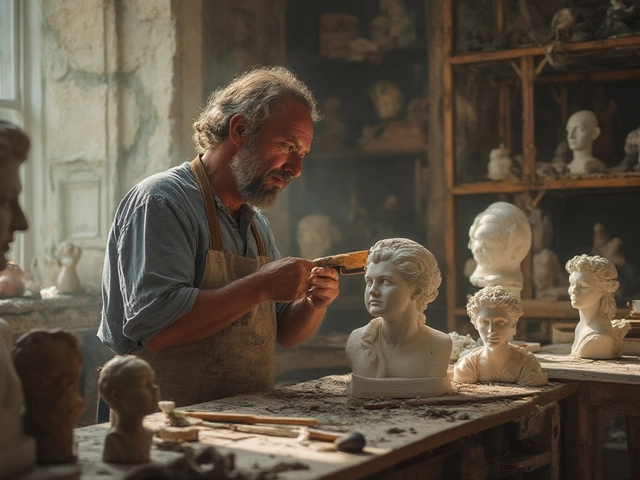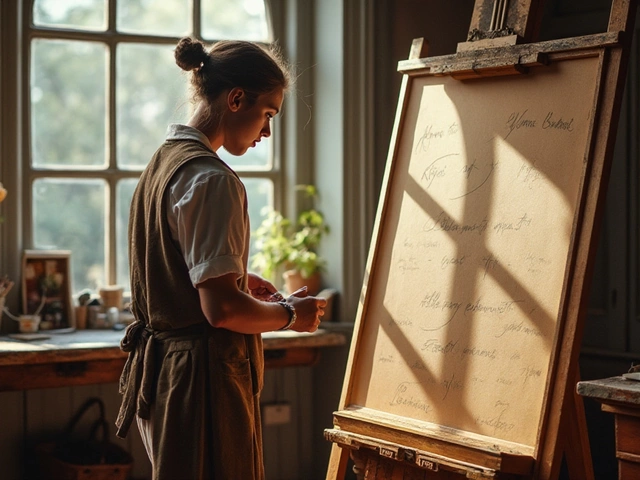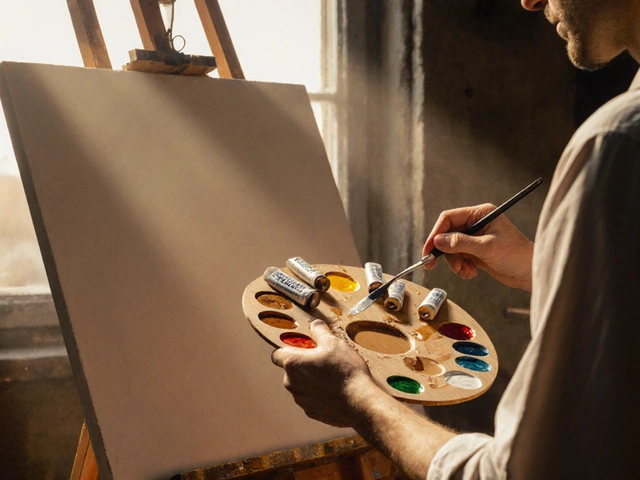Ever looked at a sculpture and wondered what really goes into creating those detailed forms and textures? Carving is one part of the magic behind it all. It's not just about hacking away at a piece of wood or stone; there are different styles to it, each with its own vibe and technique.
Carving can mainly be broken down into three types: relief, in-the-round, and intaglio. Each has its own special approach and charm. Whether you're a curious art lover or just stepping into the world of sculpture, understanding these types gives you a whole new appreciation for the skill and craftsmanship involved.
- Introduction to Carving
- Relief Carving
- In-the-Round Carving
- Intaglio Carving
- Tips for Beginner Carvers
Introduction to Carving
Carving in sculpture art is pretty much where the chisel meets the stone or wood, literally! It's been around forever, like think ancient Egypt or the eye-popping Michelangelo's David. But even with all its history, the art of carving still amazes with its mix of tradition and creativity.
At the core of carving is a blend of skill, patience, and a good eye for detail. Artists transform raw materials into lifelike forms and intricate designs. You don't just need talent, though; you've got to know your stuff. Different materials like wood, stone, and even ice have their quirks. Each demands specific tools and techniques, and mastering those really makes a difference in your finished piece.
Let's talk tools for a sec. Carving tools are an extension of the artist's hand. Whether it's a simple knife, a chiseling tool set, or even power tools for larger, more complicated projects, the right tools help bring those visions to life.
What gets most people hooked on carving is the storytelling in each piece. Each type of carving—be it relief, in-the-round, or intaglio—comes with its own way to interpret and express ideas. Whether it’s the elaborate details on a wooden panel or the bold figures carved out of marble, each tells a story frozen in time.
And while it might sound a bit old school, carving is far from a lost art. It pops up in modern places too, like trendy urban art scenes and in some jaw-dropping architecture.
There's something super rewarding about chipping away at a block of material and slowly unveiling a piece of art. If you've ever felt that itch to create something with your own two hands, picking up carving could be your next creative adventure.
Relief Carving
Relief carving is like creating a little world popping out of a flat surface. It's kind of like crafting a three-dimensional picture! Typically, the design sticks out from the background, giving a sense of depth even though it's still attached to the original block.
You've probably encountered relief carving in some unexpected places. Those coins you carry around? Yup, they're a great example of this technique. The faces and figures are carved so they stand out from the surface, making each one distinct and recognizable.
This type of carving can be split into three styles: low relief (or bas-relief), high relief, and sunken relief. Low relief is when the design barely pops out from the background—great for intricate details without much depth. High relief adds more depth, where parts might almost be detached from the background. Sunken relief, while less common, digs the design into the surface, making the background the highest point.
The ancient Egyptians mastered sunken relief, especially in tombs and temples, using it to depict stories and gods. They did this because it was less likely to get damaged by the elements—a clever technique to ensure their stories lasted ages.
To start relief carving, you'll need some basic tools: gouges, chisels, and a mallet. Wood is a popular choice for beginners because it's easier to handle compared to stone. Trust me, starting simple helps in the long run!
So, why do folks still dig relief carving? It's perfect for making detailed and dramatic artworks. Plus, it offers a fantastic way to explore depth and dimension without leaving the piece behind.

Intaglio Carving
Intaglio carving is a unique form of sculpture art where the design is etched or cut into the surface rather than stand out from it. Imagine this as the opposite of relief carving, where parts of the surface are removed to reveal a pattern. It's like drawing in reverse—carving out the background to leave the image recessed.
Historically, intaglio techniques have been used in various cultures, especially for engraving designs on gemstones. The ancient Egyptians and Greeks were masters at this, often creating seals and amulets through this method. The appeal lies in its durability and the unique visual effects it can create.
When working on an intaglio piece, artists can use a variety of tools, depending on their material choice. Tools like gravers or burins are common for precision work, often used in metals or gemstones. For those starting with wood carving, sharp chisels become an artist's best friend.
- Choose your material wisely. Soft woods or acrylics are great starting points.
- Invest in a quality set of chisels or gravers. It's all about those clean lines!
- Sketch your design directly on the material. Guided lines often make the work more precise.
- Patience is key. Intaglio carving requires a steady hand and a lot of practice.
While it might seem intricate, the satisfaction of seeing a recessed image come to life is incredible. Plus, intaglio can incorporate into many modern art and design projects. So, whether you're just curious or itching to try it out, intaglio carving connects us to a rich tradition of carving with plenty of room for creativity.
Tips for Beginner Carvers
Dipping your toes into the world of sculpture art can be both exciting and a bit intimidating. But fear not! With a few handy tips, you'll be chiseling away like a pro.
First up, get to know your tools. The market is packed with different carving tools, and picking the right ones can make or break your experience. Start with a basic set: a carving knife, a gouge, and a V-tool. These will cover most of your beginner needs.
Next, practice with easy materials. Wood is a popular choice, and there's something special about its texture and the way it takes shape under the knife. For beginners, soft woods like basswood or butternut are great since they're easier to carve and less likely to crack.
- Relief Carving: Start with flat surfaces to get comfortable. Create simple shapes and designs, then gradually move to more complex forms as your skill improves.
- In-the-Round Carving: Try carving small, simple figures. Animals or figurines are a good start, as they let you explore three-dimensional forms.
- Intaglio Carving: Play around with patterns and shallow designs initially, as it’s more about inscribing than removing material.
As the saying goes, practice makes perfect. Dedicate time to your craft regularly, even if it’s just a few minutes a day. The more you practice, the more intuitive it becomes.
Don't forget about safety—you’re dealing with sharp tools. Always carve away from your body and use a carving glove for extra protection. Trust me, your fingers will thank you.
If you're feeling really keen, join a carving class or group. Besides learning from others, you’ll find a community of folks who share your passion. Plus, swapping tips in person can spark all sorts of creative ideas.
To keep motivated, set small, achievable goals. Maybe aim to complete a new project each month, or try mastering a specific technique by a set time. These milestones can keep you on track and boost your confidence as you advance.
And lastly, don't be too hard on yourself. Mistakes are part of the journey, and each one is a lesson disguised as a carving mishap. So grab your tools, dive in, and enjoy the journey!







